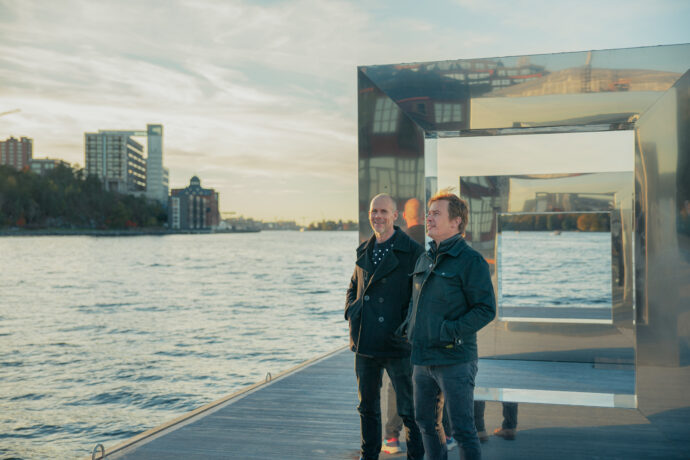The Japanese art of origami was the inspiration behind Swedish company Stilfold’s innovative carbon emission-busting steel-folding technique
The people who first began folding paper into intricate bird, flower and basket shapes about a thousand years ago would never have guessed that one day their art form could help create fantastical machines and make a significant contribution to healing the healthy ecosystem that they left behind.
Tue Beijer, co-founder and CTO of Swedish technology company, Stilfold AB, which focuses on manufacturing and system solutions, took inspiration from the ancient craft of origami to do just that.
“Our unique technique, inspired by origami, uses geometrically computer-aided curve bending to create strong and durable structures,» explains Jonas Nyvang, co-founder and CEO of Stilfold AB. «This method combines circular design, computational tools and material science with automated production solutions to achieve the lowest possible fossil fuel footprint, significantly reducing material consumption, energy use and waste and simplifying recycling processes.”
 Tue Beijer, co-founder and CTO and Jonas Nyvang, co-founder and CEO of Stilfold AB
Tue Beijer, co-founder and CTO and Jonas Nyvang, co-founder and CEO of Stilfold AB
Folding as an alternative to stamping and welding
Steel is particularly well suited to the Stilfold process. This is because it offers an alternative to stamping and replaces welding by folding parts integration. But, most importantly, it helps the steel industry to reduce its carbon impact by using a manufacturing process that requires less material and less energy compared to traditional steel manufacturing methods.
The Stilware software transforms developable design into computer-aided manufacturing (CAM) instructions. This enables the creation of 3D shapes from 2D sheets of stainless steel by folding them along curved lines optimised for strength, material use and sustainability. By integrating parts and reducing weight and waste, the Stilfold process can also be a cost-effective alternative to traditional methods.
“Our technique minimises waste by optimising the geometry of each component for parts integration, leading to more efficient material utilisation and less scrap,” says Nyvang. “Additionally, the energy-efficient process eliminates the need for press tools, further lowering the carbon footprint. The simplicity and precision of our circular design approach makes recycling easier, ensuring steel can be efficiently reused and reducing its environmental impact.”
This ‘industrial origami’ approach is already being applied in several use cases across the steel industry. Volvo’s electric vehicle offshoot Polestar, for example, is working with Stilfold to see how its steel-folding technique can be used to help produce its climate-neutral car. “Polestar’s 0 project is an initiative aimed at the complete elimination of greenhouse gases,” says Nyvang. “As part of this project, Stilfold will leverage its expertise in sustainable and low-emission manufacturing, utilising our origami-inspired steel-folding technique.”
Other companies Stilfold is working with include Arcelor Mittal, SSAB, Outokumpu, Volvo, Saab, Honda, Nissan, VW, Magna and Alstom.
What’s next for ‘industrial origami’?
And, Stilfold is not stopping there. It is continuing to invest in research and development to enhance its technology and develop new materials. “We aim to strengthen partnerships with steel manufacturers to co-develop new applications for our technology,” says Nyvang. “By leveraging automation and digital manufacturing, Stilfold seeks to increase precision and efficiency. We plan to expand globally, establishing facilities and partnerships in the EU and the USA to promote sustainable practices. We aim to drive a shift towards more sustainable and efficient manufacturing practices in the steel industry.”
The steel industry is excited to see how this innovative manufacturing process is quite literally folded into further aspects of sustainable steel manufacturing.